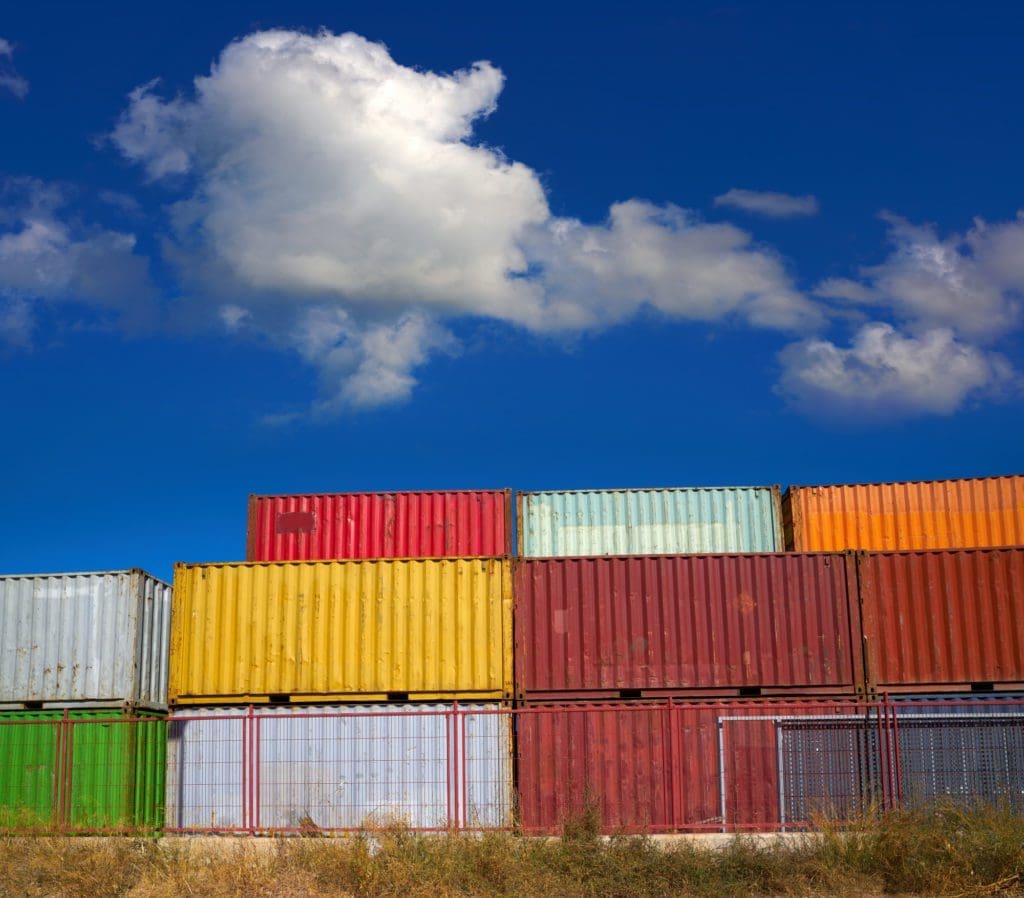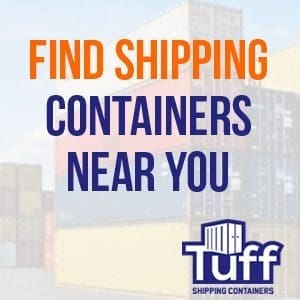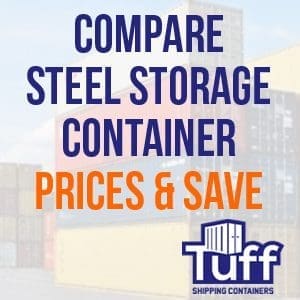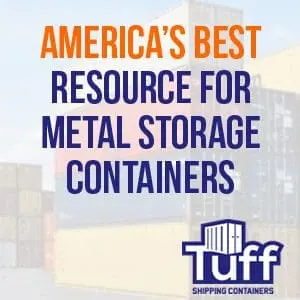
2024 Guide to Buying Shipping Containers Online
Shipping containers have surged in popularity, not just for their traditional use in transporting goods, but as versatile structures for a variety of innovative applications. From transforming them into homes, offices, pop-up shops, or even swimming pools, shipping containers offer a sturdy, affordable, and eco-friendly solution. With the ease of online shopping, buying shipping containers has never been more convenient. This guide will provide you with everything you need to know about purchasing shipping containers online in 2024.
Why Buy a Shipping Container?
Before diving into the process of buying a shipping container online, it’s essential to understand the benefits and uses of these steel boxes:
- Durability: Shipping containers are designed to withstand harsh marine environments, making them extremely durable and weather-resistant.
- Versatility: They can be repurposed for various uses, including storage, housing, retail spaces, and more.
- Cost-Effective: Compared to traditional building materials, shipping containers offer an affordable alternative.
- Sustainability: Repurposing shipping containers is an eco-friendly option, reducing waste and promoting recycling.
- Mobility: Containers can be easily transported, providing flexibility for temporary or mobile setups.
Determine Your Needs
The first step in buying a shipping container is to determine your specific needs. Ask yourself the following questions:
- What is the purpose of the container? (Storage, office space, home, etc.)
- What size do you need? (Standard sizes include 20ft and 40ft, but there are also other options available.)
- What condition should it be in? (New, used, refurbished, etc.)
- Do you need any modifications? (Doors, windows, insulation, etc.)

Understand the Different Types of Shipping Containers
There are several types of shipping containers available, each designed for specific uses. Here’s a brief overview:
Standard Dry Containers
These are the most common type of shipping containers. They are typically used for general storage and transportation. Standard sizes are 20ft and 40ft, with 8.5ft and 9.5ft height options (high cube).
Refrigerated Containers (Reefers)
Reefers are used for transporting perishable goods that require temperature control. They come with built-in refrigeration units and are more expensive than standard dry containers.
Open-Top Containers
These containers have a removable roof, allowing for the easy loading of oversized cargo that cannot fit through standard container doors.
Flat Rack Containers
Flat racks have collapsible sides and are ideal for transporting heavy or oversized loads, such as machinery or vehicles.
Modified Containers
These containers have been customized or modified for specific purposes, such as offices, homes, or retail spaces. Modifications can include adding doors, windows, insulation, electrical wiring, and more.
Find Reputable Sellers Online
With the rise of e-commerce, many companies now offer shipping containers for sale online. It’s crucial to choose a reputable seller to ensure you receive a quality product. Here are some tips for finding trustworthy sellers:
- Read Reviews: Check customer reviews and testimonials to gauge the seller’s reputation.
- Check Certifications: Ensure the seller adheres to industry standards and has the necessary certifications.
- Ask for References: Reputable sellers should be willing to provide references from previous customers.
- Verify Contact Information: Ensure the seller has a physical address, phone number, and email address for communication.


Compare Prices and Conditions
Shipping container prices can vary significantly based on size, condition, and location. Here’s how to compare prices and conditions effectively:
New Containers
New containers are typically more expensive but offer the benefit of being in pristine condition. They are ideal for uses that require a high level of structural integrity and aesthetic appeal.
Used Containers
Used shipping containers are more affordable and can still be in good condition. They are categorized into different grades:
- Grade A: Minimal wear and tear, almost like new.
- Grade B: Some dents and surface rust, but structurally sound.
- Grade C: Significant wear and tear, may require repairs.
Refurbished Containers
Refurbished containers have been repaired and repainted to restore them to a good condition. They offer a middle ground between new and used containers in terms of price and quality.
Inspect the Container (If Possible)
While buying online often means you can’t physically inspect the container before purchase, many reputable sellers provide detailed photos and descriptions. If possible, ask for a virtual tour or video inspection. Here are some key things to look for:
- Exterior Condition: Check for dents, rust, and structural damage.
- Interior Condition: Ensure the interior is clean and free of leaks.
- Doors and Seals: Check that the doors open and close properly and the seals are intact.
- Flooring: Inspect the condition of the flooring, looking for signs of rot or damage.
Understand Delivery and Logistics
Shipping containers are large and heavy, requiring specialized equipment for delivery and placement. Here’s what you need to know about delivery and logistics:
Delivery Options
Most online sellers offer delivery services. Make sure to clarify:
- Delivery Costs: Understand the delivery charges, which can vary based on distance and location.
- Delivery Method: Confirm the type of vehicle used for delivery (e.g., flatbed truck, tilt-bed truck) and any requirements for unloading.
- Delivery Time: Ensure the delivery schedule fits your timeline.
Site Preparation
Prepare the site where the container will be placed. This may involve:
- Leveling the Ground: Ensure the ground is level to prevent the container from shifting.
- Creating a Foundation: Depending on the use, you might need a concrete slab, gravel bed, or wooden beams.
- Access: Ensure there is adequate access for the delivery vehicle to reach the site.


Consider Modifications and Customizations
One of the main advantages of shipping containers is their versatility. Depending on your needs, you may want to customize your container. Here are some common modifications:
- Doors and Windows: Add doors and windows for improved access and natural light.
- Insulation: Insulate the container for better temperature control.
- Electrical and Plumbing: Install electrical wiring and plumbing for residential or office use.
- Interior Finishes: Add drywall, flooring, and other interior finishes to make the space more comfortable.
- HVAC Systems: Install heating, ventilation, and air conditioning systems for climate control.
Understand Legal and Zoning Requirements
Before purchasing a shipping container, it’s crucial to understand any legal and zoning requirements in your area. These regulations can vary widely depending on your location and intended use of the container.
Permits and Approvals
Check with your local government to determine if you need any permits or approvals for placing and using a shipping container on your property. This can include building permits, zoning permits, and any other relevant approvals.
Zoning Regulations
Ensure that your property is zoned for the intended use of the container. For example, using a container as a living space may have different zoning requirements compared to using it for storage.



Plan for Long-Term Maintenance
Shipping containers are designed to be low-maintenance, but they still require some upkeep to ensure longevity. Here are some maintenance tips:
- Regular Inspections: Periodically inspect the container for signs of rust, leaks, or structural damage.
- Rust Prevention: Apply rust-resistant paint or coatings to protect against corrosion.
- Pest Control: Ensure the container is sealed properly to prevent pests from entering.
- Weatherproofing: Check seals and insulation to ensure the container remains weatherproof.
Buying a shipping container online in 2024 is a practical and efficient way to acquire a versatile and durable structure for various uses. By following this guide, you can navigate the process with confidence, ensuring you choose the right container for your needs and budget. From determining your requirements to understanding legal regulations and planning for long-term maintenance, each step is crucial in making an informed purchase. Whether you’re looking to create a unique living space, expand your storage capacity, or explore innovative business opportunities, shipping containers offer a world of possibilities.

Leave a Reply